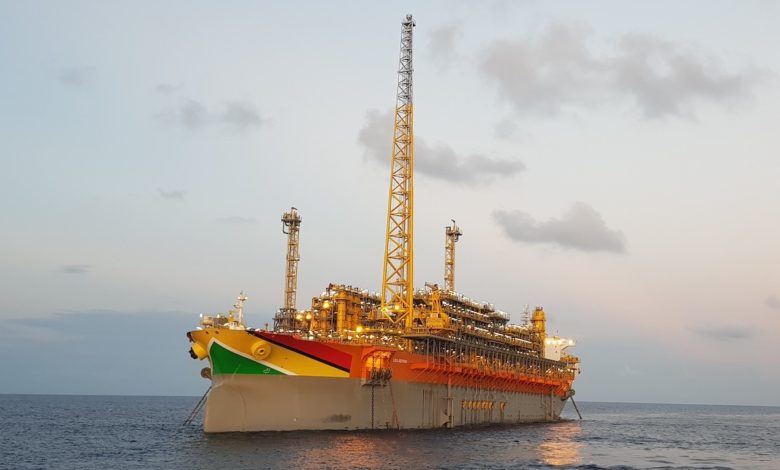Guyana’s revenue from oil and gas production set to break $1bn in 2022

According to research by Rystad Energy, the government of Guyana can expect revenue from domestic oil and gas production to surpass $1bn this year and reach $7.5bn annually in 2030, powered by the offshore Stabroek block. This year is set to be a turning point for the Georgetown government to start capitalizing on the vast reserves in the offshore field, with revenues more than doubling over 2021 levels.
The government’s take from the production is expected to increase until 2025, reaching $4.2bn annually. Triggered by a forecast drop in oil prices and continued spending on the field’s development, government revenues are likely to fall, to $2.4bn, in 2027. Production growth would then be set to accelerate, with revenue momentum resuming as new pre-final investment decision (FID) projects are sanctioned and brought online, leading to peak anticipated government revenues of $16bn in 2036.
These projections do not factor in as-yet undiscovered resources.
The recent spate of prolific discoveries and the steady pace of FIDs position the Guyanese government to reap the rewards of these finds with expected cumulative revenues totaling about $157bn by 2040.
Guyana is the global leader in total offshore discoveries since 2015, with 11.2bn barrels of oil equivalent, amounting to 18% of discovered resources and 32% of discovered oil. Of the total, 9.6bn barrels are oil, far outpacing second-place US, with a comparatively small 2.8bn barrels. The Stabroek block accounts for all of these finds, but recent discoveries in other areas show the potential for growth elsewhere.
Guyana is forecast to produce 1.7m barrels per day (bpd) of oil by 2035 – not accounting for as-yet undiscovered volumes – propelling the country to the fourth position on the list of the largest global offshore oil producers.
“Guyana is just starting to extract and monetize its vast resource wealth, and the coming years will be a financial windfall for the Georgetown government. The country has played the long game after several decades of elusive exploration. The country’s offshore production is finally ready to take off,” says Schreiner Parker, senior vice president and head of Latin America and the Caribbean at Rystad Energy.
Helping to transform Guyana into a global heavyweight in offshore production is its competitive breakeven costs, which average $28 per barrel across all projects and less than $20 for producing projects. Guyana’s offshore oil fields are some of the most competitive supply sources outside of the Middle East and offshore Norway.
In addition, emissions intensity from offshore activity in Guyana is lower than the global average for oil and gas production and deepwater offshore production, further strengthening the country’s position through the energy transition. Upstream emissions from Guyana’s deepwater activities average 9 kilograms of CO2 per boe, comparable to Brazil and slightly higher than Norway.
